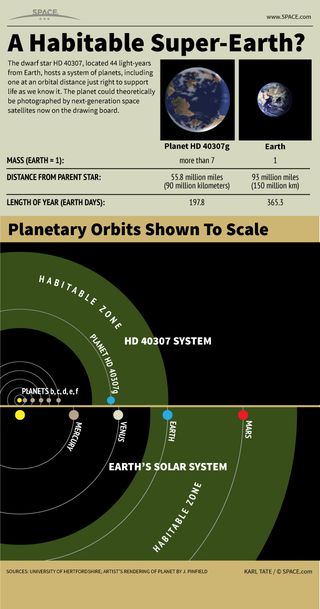Featured
- Get link
- X
- Other Apps
HD 40307g

HD 40307 g is a Neptune-like exoplanet that orbits a K-type star. Its mass is 7.1 Earths, it takes 197.8 days to complete one orbit of its star, and is 0.6 AU from its star. Its discovery was announced in 2013.
The dwarf star HD 40307, located 44 light-years from Earth, hosts a system of six planets, including one at an orbital distance just right to support life as we know it. The planet could theoretically be photographed by next-generation space satellites now on the drawing board.
The alien planet, classified as a super-Earth, has the name HD 40307g and it is the sixth planet from its sun. The planet orbits at a distance of 55.8 million miles (90 million kilometers) from the star. This distance puts it into HD 40307’s habitable zone, the region in a planetary system where liquid water can exist on a planet’s surface. The planets Earth and Mars orbit within our sun’s habitable zone.
The mass of exoplanet HD 40307g is at least seven times the mass of Earth. A single year on the planet takes 197.8 Earth days.
HD 40307g is distant enough from its star to likely be rotating on its own axis instead of having one face permanently turned toward its sun. This makes an Earth-like day and night cycle likely on the planet, which also increases the likelihood that life could have evolved there.
The discovery was made by an international team of astronomers led by Mikko Tuomi of the University of Hertfordshire, and Guillem Anglada-Escude of the University of Goettingen.
- Get link
- X
- Other Apps
Comments
Post a Comment